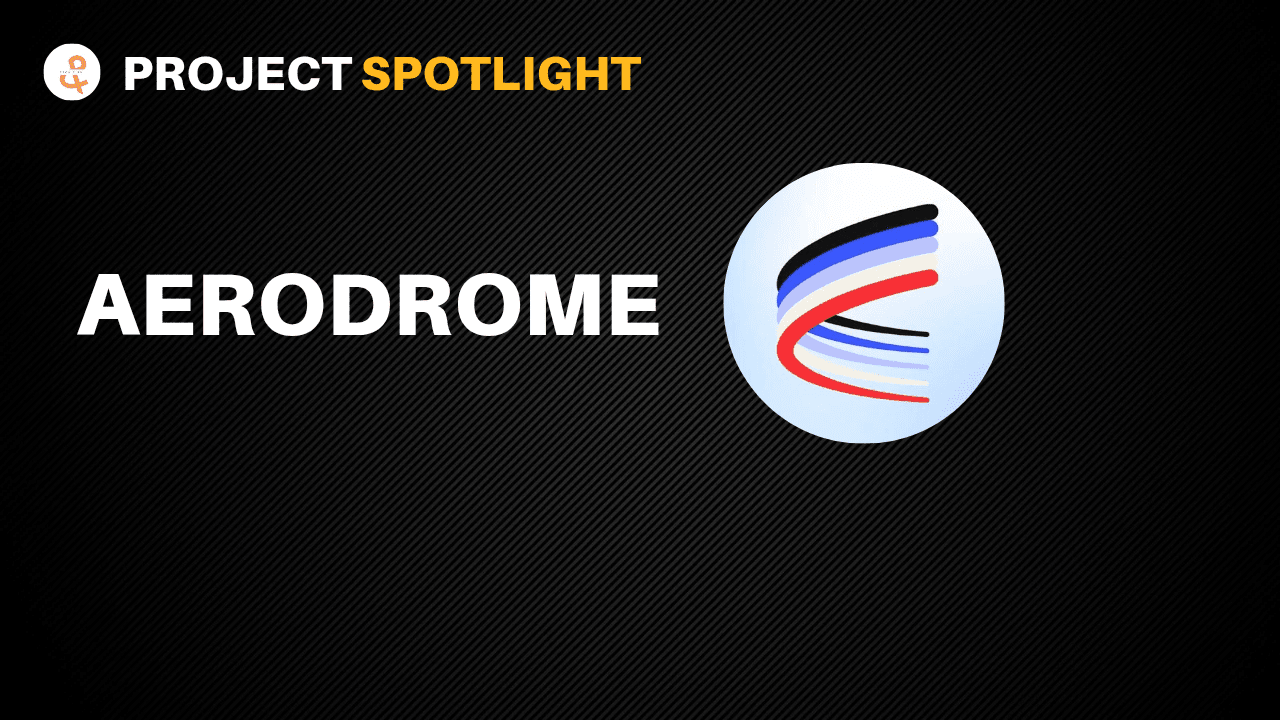The DeFi Ecosystem somehow fundamentally broken by fragmented liquidity. Across countless blockchains, Layer 1s, and Layer 2s, capital remains siloed, leading to inefficient markets, higher slippage for traders, and diluted incentives for those providing crucial liquidity. This crucial issue stifles true composability and hinders DeFi's promise of a seamless, global financial system.
Enter Aerodrome Finance, an Automated Market Maker (AMM) and DEX meticulously engineered to serve as the central liquidity hub for the Base network, Coinbase's Layer-2 blockchain. Launched in August 2023, Aerodrome isn't just another DEX; it's a strategic solution designed to consolidate liquidity, minimize trading friction, and foster a sustainable economic model within the Base ecosystem. By leveraging a sophisticated tokenomics model and advanced liquidity mechanisms, Aerodrome aims to provide deep, efficient markets that are critical for Base's growth and its ambition to onboard the next wave of users into on-chain finance.
▨ The Problem: What’s Broken?
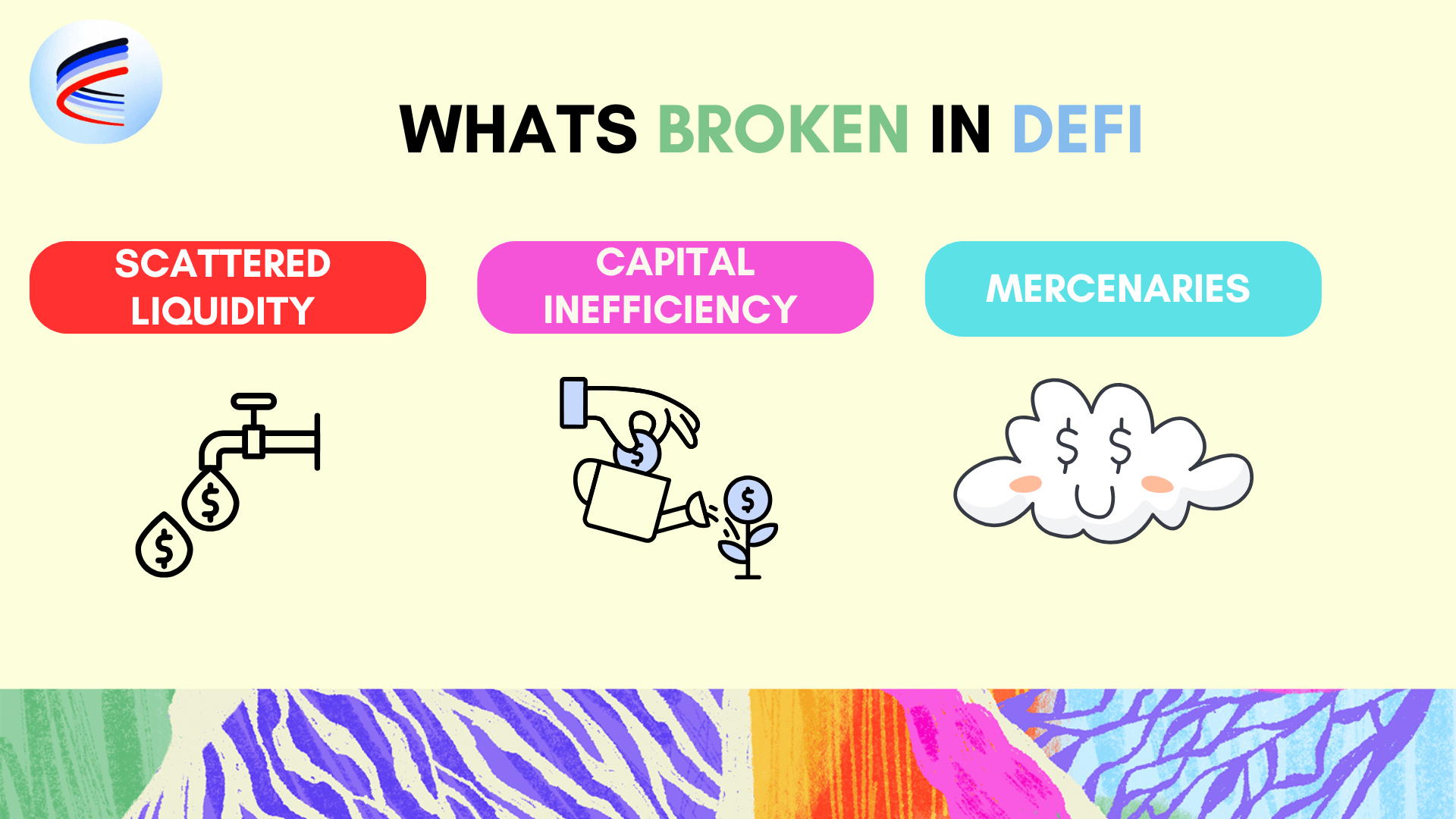
🔹 Liquidity Scattered, Not Shared → DeFi's core promise of composability, where different financial instruments seamlessly interact. Which is undermined by liquidity being spread across dozens of disparate blockchains and applications. This isn't just a theoretical problem; it means that capital deposited in one protocol or chain often remains inaccessible to others, creating "walled gardens" instead of a unified financial layer.
🔹 Existing AMMs Fall Short on Capital Efficiency → Many traditional Automated Market Makers (AMMs) distribute liquidity uniformly across all possible price ranges. This "thin" liquidity leads to significant capital inefficiency, where a large portion of deposited assets sits idle, unable to generate fees effectively. For traders, this translates directly into higher slippage, meaning their trades execute at a worse price than expected, especially for larger volumes.
🔹 Misaligned Incentives and Mercenary Capital → Traditional liquidity mining programs often attract "mercenary capital". Liquidity providers (LPs) who chase the highest short-term yields, moving their capital frequently between protocols. This "farm-hopping" behavior leads to unstable liquidity, making it difficult for protocols to build a reliable and deep market over the long term. Furthermore, many DEXs fail to align the incentives of token holders with the long-term health of the protocol, often directing 100% of fees to LPs without a clear value accrual mechanism for the governance token itself.
🔹 User Experience Friction and Adoption Barriers → The fragmented nature of DeFi creates a cumbersome user experience. Users often need to manage multiple wallets, acquire different gas tokens for various chains, and navigate complex bridging interfaces just to move assets. This friction slows down adoption, particularly for new users, and prevents DeFi from scaling meaningfully to a broader audience.
▨ What Aerodrome Is Doing Differently
Aerodrome Finance tackles these systemic issues by building upon the robust foundation of the Velodrome V2 protocol and introducing a highly innovative ve(3,3) tokenomics model. This strategic combination allows Aerodrome to create a self-optimizing liquidity environment that directly addresses capital inefficiency, aligns stakeholder incentives, and provides a superior trading experience on the Base network.
At its core, Aerodrome leverages Velodrome V2's advanced concentrated liquidity pools, further enhanced by its Slipstream model. Unlike older AMMs that spread liquidity thinly, concentrated liquidity allows Aerodrome to focus capital within specific, actively traded price ranges. This means that liquidity providers (LPs) can deploy their capital more efficiently, earning higher returns from transaction fees, while traders benefit from significantly reduced slippage, even on large trades. The Slipstream model refines this by dynamically adjusting minimum ranges based on volatility and directing AERO token emissions specifically to LPs whose positions are within the active trading range, minimizing the need for constant rebalancing.
The true game-changer, however, is Aerodrome's ve(3,3) tokenomics. This model ingeniously fuses Curve Finance's vote-escrow system with OlympusDAO's game theory, creating a powerful incentive structure that combats "mercenary capital". Users lock their AERO tokens for up to four years to receive veAERO (vote-escrowed AERO) in the form of an NFT. The longer the lock, the greater their voting power and rewards. These veAERO holders then vote weekly to direct AERO emissions to specific liquidity pools. Crucially, they receive 100% of the trading fees generated by the pools they vote for, plus additional "bribes" offered by other protocols seeking liquidity. This creates a powerful economic alignment: those with the most influence over the protocol's direction are directly incentivized to ensure its operational efficiency and overall success, fostering "sticky" liquidity and sustainable growth.
▨ Key Components & Features
Aerodrome's architecture is built on several interconnected components that drive its efficiency and unique incentive structure:
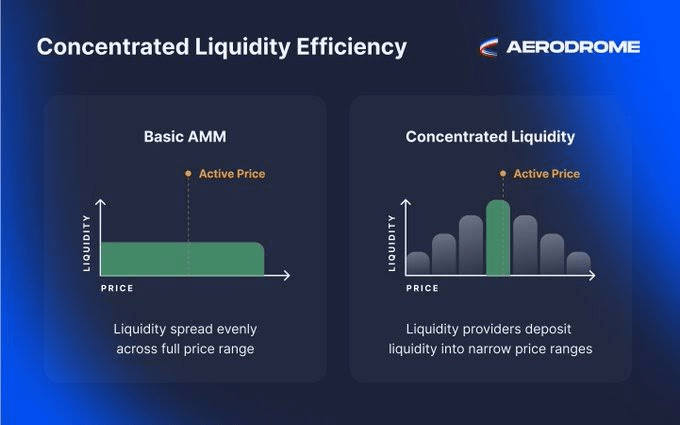
1️⃣ Stable Pools : These pools are specifically designed for correlated assets like stablecoins (USDC, DAI, LUSD). They utilize a specialized pricing formula (x³y + y³x ≥ k) to ensure minimal slippage even with large trading volumes, maintaining stability in low-volatility markets.
2️⃣ Volatile Pools : Catering to uncorrelated, high-volatility tokens such as AERO, BTC, and ETH, these pools employ a more generic AMM formula (x × y ≥ k). This design is better suited for managing the inherent price fluctuations of such assets, ensuring efficient trading across a wide range of cryptocurrencies.
3️⃣ Concentrated Liquidity (Slipstream) : Aerodrome leverages Velodrome V2's advanced concentrated liquidity, enhanced by the Slipstream model. This allows liquidity to be concentrated within specific, active trading ranges, significantly improving capital efficiency and reducing slippage for traders. Slipstream also dynamically adjusts tick spacing (e.g., 0.5% for stablecoins, 2% for ETH, 20% for new tokens) to optimize for different asset volatilities and reduce LP rebalancing needs.
4️⃣ Dynamic Fee Modules : Pool swap fees on Aerodrome can be adjusted independently of the pool type, allowing for flexibility to align with partner protocols' needs and adapt to market volatility. This feature aims to reduce operational overhead by enabling self-adjustment on demand, enhancing the protocol's adaptability.
5️⃣ Protocol Router : This intelligent component evaluates both stable and volatile pool types to identify the most efficient price quotation and trade execution path. A critical security feature is its use of 30-minute Time-Weighted Average Prices (TWAPs) to protect against flashloan attacks, enhancing the platform's resilience and ensuring long-term sustainability without external upkeep.
6️⃣ veAERO NFTs : By locking AERO tokens for a chosen duration (up to four years), users receive veAERO as a non-fungible token (NFT). These NFTs represent voting power, which increases linearly with the lock duration, and entitle holders to 100% of protocol fees and bribes from the pools they vote for.
▨ How Aerodrome Works
Aerodrome's operational flow is designed to be intuitive for users while orchestrating a complex, self-optimizing liquidity system behind the scenes:

🔹 Step 1: User Initiates Interaction
A user begins by connecting a compatible crypto wallet (like MetaMask or Coinbase Wallet) to the Aerodrome Finance platform on the Base network. They can then choose to perform a token swap or provide liquidity to a pool. For token swaps, they select the desired trading pair and amount. For liquidity provision, they deposit a pair of tokens into a chosen liquidity pool.
🔹 Step 2: Protocol Routes and Executes
When a swap is initiated, Aerodrome's Protocol Router automatically evaluates both stable and volatile pool types to determine the most efficient price quotation and execution path. This ensures minimal slippage and competitive fees for the trader. For liquidity provision, the deposited tokens are added to the selected pool, and the user receives LP tokens representing their share.
🔹 Step 3: Liquidity Providers Earn Emissions
Liquidity providers (LPs) who deposit their tokens into Aerodrome's pools are rewarded with AERO tokens as emissions. These rewards incentivize their crucial contribution to maintaining deep and stable liquidity across the exchange.
🔹 Step 4: AERO Holders Lock for Governance Power
AERO token holders can choose to lock their AERO for a period ranging from one week up to four years, receiving veAERO in the form of a non-fungible token (NFT). The longer the lock duration, the greater their voting power and influence within the protocol.
🔹 Step 5: veAERO Holders Direct Emissions and Earn Rewards
veAERO holders vote weekly to determine which liquidity pools receive AERO emissions. This crucial decision directs incentives and liquidity within the ecosystem. In return for their votes, veAERO holders receive 100% of the trading fees generated from the pools they voted for, along with any additional "bribes" offered by other protocols to attract votes to their pools.
🔹 Step 6: The Flywheel Reinforces Liquidity
The attractive rewards for veAERO holders incentivize them to lock more AERO and actively vote for pools with high trading volume and fee generation. This strategic direction of AERO emissions makes those pools highly appealing to LPs, who then provide deeper liquidity. Deeper liquidity leads to lower slippage and a better trading experience, attracting even more traders to the platform, thus restarting and reinforcing the entire virtuous cycle.
▨ Value Accrual & Growth Model
Aerodrome's design is fundamentally geared towards capturing value and fostering sustainable growth within the Base ecosystem, transforming from a niche tool into essential infrastructure.
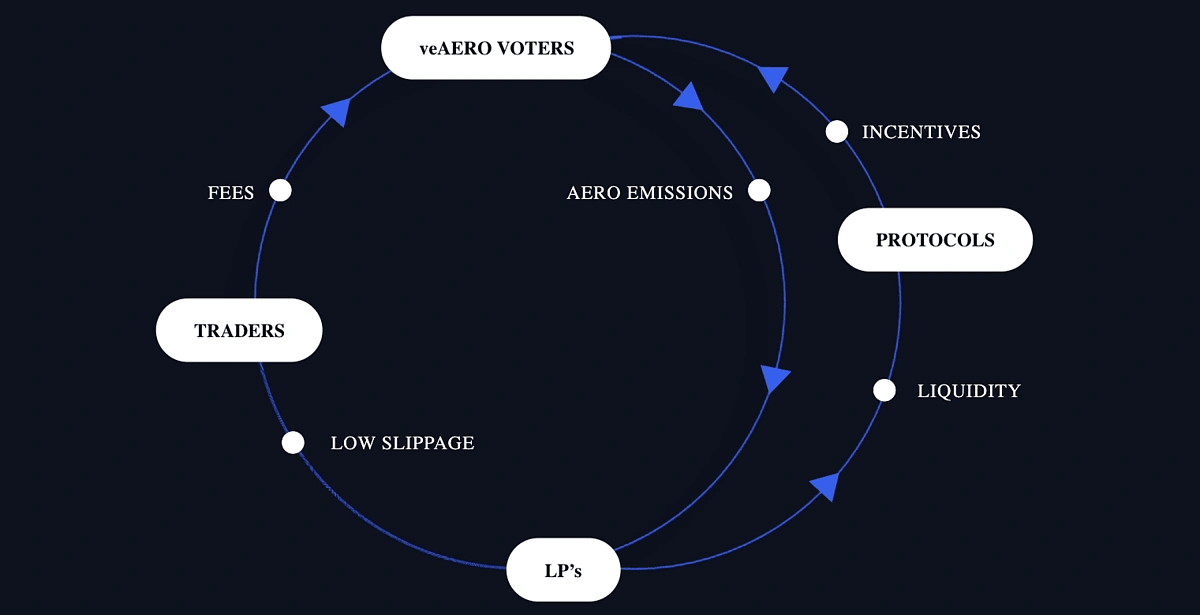
✅ Use Case or Integration → Aerodrome is positioned as the primary liquidity hub for the Base network. This solves the critical demand for deep, efficient, and low-cost token swaps on Coinbase's Layer 2. It actively supports the growth of the Base ecosystem by promoting USDC adoption and providing essential liquidity for liquid staked tokens. Its strategic alignment with Coinbase, including the integration of Base DEX services directly into Coinbase's main platform, significantly expands its user base exposure and solidifies its ecosystem leadership.
✅ Participant Incentives → Contributors are rewarded through a multi-layered incentive structure. Liquidity providers (LPs) earn AERO tokens for their capital contributions to pools. More significantly, veAERO holders, who lock their AERO tokens, receive 100% of the protocol's trading fees generated from the pools they vote for, plus additional "bribes" offered by other protocols. This direct revenue share powerfully aligns their economic interests with the protocol's performance.
✅ Economic Reinforcement → The ve(3,3) tokenomics model creates a self-optimizing liquidity flywheel. Increased trading volume leads to higher fees and bribes, which in turn incentivizes more AERO locking and voting for high-volume pools. This directs AERO emissions to these pools, attracting deeper liquidity, which then results in lower slippage and a better trading experience, attracting even more traders. This continuous feedback loop reinforces the protocol's economic health and liquidity depth.
✅ Scalability Levers → Built on the Base network, an Ethereum Layer 2 solution, Aerodrome inherently benefits from significantly lower transaction fees and faster transaction speeds compared to Ethereum mainnet. This reduces one of the biggest barriers for DeFi users and directly translates into a better experience. Furthermore, its implementation of concentrated liquidity (Slipstream) ensures superior capital efficiency, allowing the protocol to handle increasing trading volumes with optimized liquidity utilization.
✅ Adoption Loop → The enhanced trading experience (low slippage, competitive fees) attracts more traders to Aerodrome. This increased trading volume generates higher fees, which in turn makes veAERO more attractive, leading to more AERO being locked. The increased veAERO locking directs more emissions to high-demand pools, further deepening liquidity and improving the trading environment. This virtuous cycle drives continuous usage and improvement, positioning Aerodrome as an indispensable part of the Base ecosystem.
▨ Token Utility & Flywheel
AERO is the native ERC-20 utility and governance token of the Aerodrome protocol. It is central to the entire economic and governance framework of the platform, designed to incentivize liquidity provision and enable decentralized control.
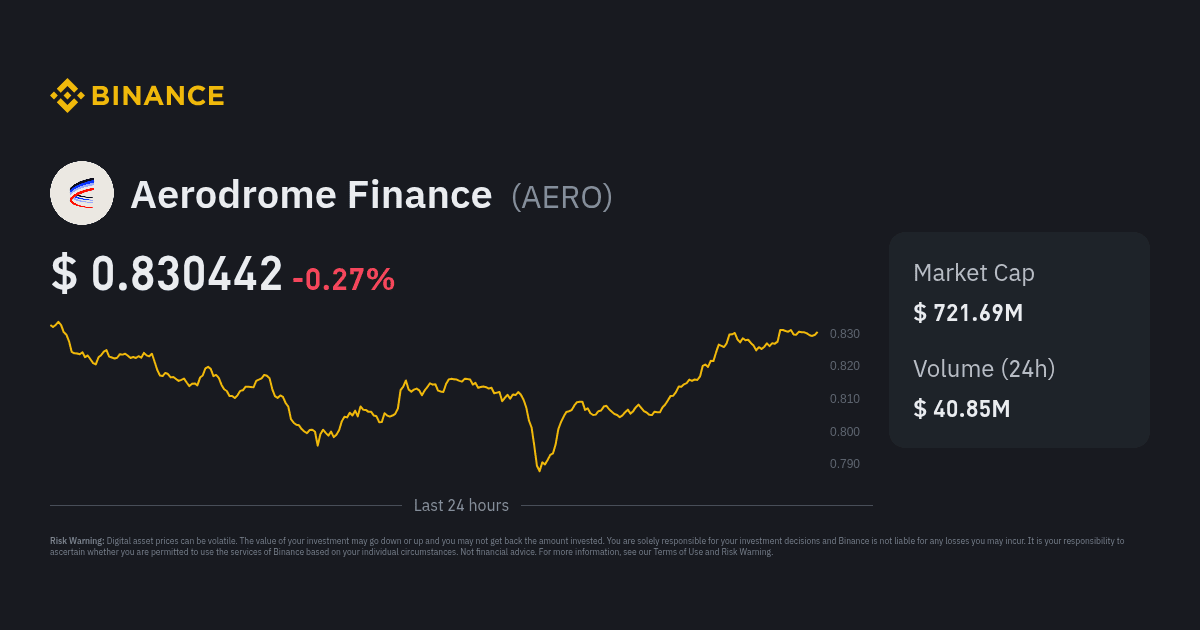
✅ AERO Token Distribution Plan
Allocation Category Percentage of Total Supply Strategic Rationale Voter Incentives 8% Encourages active and informed governance participation, matching ecosystem protocol incentives, or attracting votes to critical pools. Initial Liquidity Pool 2% Ensures immediate trading functionality and initial liquidity upon the protocol's launch. Airdrop to veVELO Lockers 40% Recognizes contributions to the Velodrome ecosystem and strategically attracts experienced DeFi users and their capital to Base. Ecosystem Pools & Public Goods Funding 21% Supports the broader development, health, and expansion of the Base ecosystem, fostering innovation and utility. Aerodrome Team 14% Demonstrates long-term commitment from the core development team, with tokens locked for two to four years, aligning their interests with the protocol's sustained success. Protocol Grants & AERO Pools Votepower 15% Fosters external development, encourages integration, and further incentivizes liquidity provision by enabling strategic voting power.
✅ Token Use Cases:
Payments: While AERO isn't directly used for payments in the traditional sense, the fees generated from token swaps on Aerodrome are distributed to veAERO holders. This means that the economic activity of traders directly benefits those who contribute to the protocol's governance and liquidity direction.
Rewards: AERO tokens are primarily used to reward liquidity providers (LPs) who supply capital to Aerodrome's trading pools. These emissions are crucial for incentivizing the deep liquidity necessary for efficient trading.
Staking: Users "stake" their AERO by locking it for a period of up to four years to receive veAERO (vote-escrowed AERO). This locking mechanism secures their voting power and aligns their long-term interests with the protocol's success.
Access / Governance: veAERO holders wield significant governance power. They vote weekly to determine which liquidity pools receive AERO emissions, effectively directing incentives and liquidity within the ecosystem. Beyond emissions, they can also vote on broader protocol upgrades and parameter changes.
✅ The Flywheel:

Aerodrome's ve(3,3) model creates a powerful, self-sustaining liquidity flywheel that drives its growth and value accrual. It's a dynamic system where every participant's rational self-interest reinforces the health of the entire protocol.
Imagine a trader on Base looking for the best price and lowest slippage for a token swap. They gravitate towards Aerodrome because its concentrated liquidity pools, fueled by AERO emissions, offer superior execution. This increased trading volume generates higher fees for the protocol.
Now, consider the veAERO holders. They are the economic backbone, receiving 100% of these trading fees, plus additional "bribes" from other projects on Base that want to attract liquidity to their own pools. This direct financial incentive makes locking AERO for veAERO highly attractive, encouraging more users to commit their tokens for longer durations, thereby increasing their voting power.
Each week, these veAERO holders vote to direct AERO emissions to specific liquidity pools. Naturally, they'll vote for the pools that generate the most fees and bribes, maximizing their own returns. This strategic allocation of emissions makes those particular pools highly lucrative for liquidity providers (LPs), drawing in even deeper liquidity.
The result? Deeper liquidity across key trading pairs on Aerodrome, which translates directly into even lower slippage and a more efficient trading environment for users. This improved experience attracts more traders, driving up trading volume, which in turn generates more fees and bribes, restarting the cycle. It's a powerful, self-reinforcing system where usage fuels demand for the token, which in turn strengthens the protocol's core function, creating a robust and sustainable ecosystem on Base.


